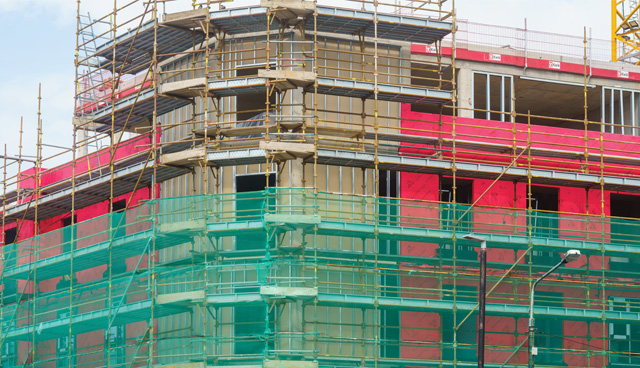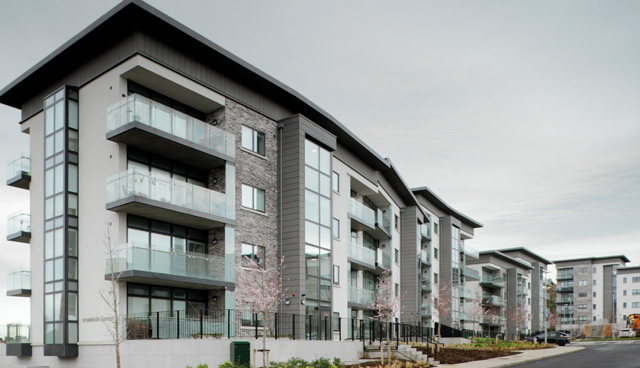
Departmental priorities for 2023
18th July 2023
Cover: Defined by delivery
18th July 2023Housing for All exceeds annual target for new homes

Total housing completion figures for 2022 show that the State exceeded its target for new homes by over 5,000 homes, a positive sign as the Government seeks to revise targets set under Housing for All.
Delivery
Just under 30,000 homes – 29,851 in Housing for All progress reports compiled by the Department of the Taoiseach and 29,822 in Central Statistics Office (CSO) data – were completed in 2022, exceeding the Housing for All target for the year by 21 per cent and proving correct the Government’s assertion during the year that there was a “strong pipeline” for housing in 2022. With 20,433 homes completed in 2021, an increase of 20.16 per cent in new home completions was required for the State to reach its 2022 goal. An increase of 46.1 per cent was recorded, a rate that eclipses the high of 45.51 per cent recorded during the 2010s as the construction industry began its recovery from the very low completion numbers seen at the beginning of the decade.
The statistics will have been welcome news in government circles, with 2022 having been the first year under Housing for All that contained an annual target. Within these figures was further good news for those who stress the need to move towards scheme and apartment building in Ireland; when compared with 2019, the last year with construction unaffected by Covid-19 before 2022, increases of 20 per cent and 163 per cent were seen in scheme house and apartment completions respectively in 2022. In 2021, single home developments – the only other category of home collated in CSO data – accounted for 23.04 per cent of new dwelling completions; in 2022, that share fell to 18.5 per cent. As recently as 2016 and 2017, this rate stood at 36.9 per cent and 29.64 per cent respectively.
All but three of the 31 local authority areas saw an increase in completions in 2022, with the largest increases coming in Wicklow County (107 per cent), Dún Laoghaire-Rathdown (98 per cent), South Dublin County (85 per cent), and Dublin City (84 per cent), and the decreases coming in Carlow County (8 per cent), Roscommon County (14 per cent), and Leitrim County (21 per cent). The counties with the highest ratio of completions per 1,000 people were Kildare (10.6), Wicklow (10), and Meath (8.5), while the counties with the lowest ratios were Tipperary and Roscommon (both 2.6), and Leitrim (two).
There will be cause for concern at the decrease in residential construction commencements that occurred simultaneously to the increase in housing completions. While commencements dipped in 2020, largely due to Covid-related restrictions on construction activity, they saw a large recovery in 2021, but 2022 saw a 12 per cent decrease in the number of new units that began construction. 30,724 new homes were commenced in 2021, as compared to 26,957 in 2022. Further emphasising this worry will be the CSO’s index of residential building production, which decreased throughout 2022. Using 2015 levels of construction as 100, the index recorded Q4 2021 as 132, but this figure fell consecutively in the first three quarters of 2022 to 125.6, 120, and 106.9, before rebounding to 112.2 in Q4. Q1 2023 shows another quarterly increase to 120.2, although this is an annual decrease.
The target for completions in 2023 as set out in Housing for All is 29,000, which would mean that the level of completions would simply need to maintain from 2022, but the decrease in construction activity during 2022 casts the possibility of that happening into doubt. However, the latest available CSO data shows there to have been 6,716 new dwelling completions in Q1 2023, a 19.1 per cent increase on Q1 2022.
Q1 is typically the quarter that shows the lowest construction activity per year; in the 13 first quarters from 2011-2023, it showed the lowest number of dwelling completions in nine. Completions in Q1 2022 accounted for 18.9 per cent of total completions in 2022. If this rate were to be repeated throughout 2023 based on the Q1 2023 total of completions, a total of 35,534 new units would be completed during the year. Whether or not enough projects have been commenced to support such a rate of construction remains doubtful, with it left to be seen in the second half of 2023 how the slowdown in activity in 2022 will affect delivery.
Implementation
The Government’s latest progress report for Housing for All, covering Q1 2023, shows that 12 of the 23 actions due for delivery in Q1 2023 have been delayed, some into 2024. Notable amongst the actions delayed are: the exploration of the scope for the Housing Agency Acquisition Fund to add to social housing stock by converting non-residential or larger residential units into smaller residential units; a review of the Rental Accommodation Scheme; the issuance of updated guidance on rural housing; legislating to increase the borrowing capacity of the Housing Finance Agency; and the development of new regulatory controls for short-term and holiday lets.
Notable actions due in Q1 to have been implemented on time include: the revision of social housing income limits to a maximum of €40,000 per annum; the submission of a report to government by the Land Development Agency (LDA) on relevant state lands in the LDA’s public land database; the introduction of a new programme for the compulsory purchase order of vacant properties for resale on the open market; and a review of the Rural Regeneration and Development Fund.
Central to the implementation of the Government’s housing reform will also be the forthcoming revision of the National Planning Framework, which the progress report states has been commenced. It is expected that the completion targets within Housing for All will be updated in the revision in order to better reflect the housing need of the State’s growing population.
Speaking in June 2023, Taoiseach Leo Varadkar TD said: “We will have to revise upwards our annual targets for housing completions. We are at 30,000 a year now. Much more is achievable… I would like to see us ramping up as fast as we can. The current target is to get to 40,000 before the end of the decade. I think we are at 30,000 now, surely we can get to 40,000 sooner.”
CALF review
As part of the implementation of Housing for All, the Government carried out a review into the structure and operation of the Capital Advance Leasing Facility (CALF), the results of which were published in March 2023. CALF, when combined with Payment and Availability (P&A) funding, is the State’s primary funding stream for the delivery of social housing and the Government stated that the review was carried out to assists the approved housing body (AHB) sector to deliver its 45 per cent share of the social housing targets within Housing for All.
The review returned six recommendations: the discontinuation of the limiting of initial P&A amounts to a percentage of local market rent, with the initial P&A amount now to be calculated on a debt-service cover ratio target; the establishment of a departmental working group to explore gearing issues with AHBs; the exploration of options for early repayment of CALF loans; the retention of CALF loans as repayable loans; the establishment of a direct link between applications for P&A-CALF support and the housing delivery action plan of a given local authority; and that the definition of when a project funded by P&A-CALF is delivered to be revised to once the sale has taken place and utility connections are in place.
The hope within the AHB sector will be that these proposed reforms will engineer an uptick in social housing delivery, which is needed; despite 2022 targets being exceeded, the 9,000 target for social housing new builds was missed, with 7,433 delivered, meaning that the deficit in social homes and the overall surplus were made up by the private sector.
Despite that, this figure represents the highest number of new-build social homes built in one year since 1975 and a 43 per cent increase from 2021. With 9,100 social new-builds due for delivery in 2023, the sector will be hoping that such an increase and such reforms herald a new dawn in social housing delivery.








